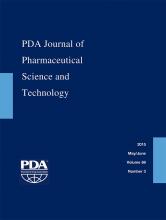Abstract
Commercially available parenteral emulsions (n = 4) and admixtures for parenteral nutrition (n = 2) were exposed to UVA and visible irradiation (320–800 nm) at standardized, validated conditions according to the ICH Guideline Q1B (Option 1, to an endpoint corresponding to 1.2 × 106 lux h in the range 400–800 nm). Physical stability was evaluated as changes in emulsion droplet size measured by photon correlation spectroscopy, and emulsion droplet zeta potential measured by micro-electrophoresis. Chemical stability was evaluated by detection of lipid peroxidation according to the thiobarbituric acid test and changes in pH. The results are valid for samples stored up to 24 h after exposure. The preparations remained physically stable, even though exposed to UVA (489 W h/m2) and visible radiation (1.2 × 106 lux h) that correspond to as much as 2–4 days exposure on a sunny window sill. This was the case also when vitamins and trace metals were added. Spiking of the samples with the highly efficient photosensitizer 5-hydroxymethyl furfural (5-HMF), a thermal degradation product of glucose commonly present in steam-sterilized glucose infusions, did not reduce physical stability. Hence, the lipid peroxidation and changes in pH and color induced by irradiation of certain preparations did obviously not influence their physical stability.
LAY ABSTRACT:Parenteral preparations are commonly exposed to optical radiation during storage and administration. Exposure to visible light and UVA radiation indoors, or additionally UVB radiation outdoors, may lead to degradation of active pharmaceutical ingredients and drug formulations. Clear plastic and glass containers commonly used for parenteral preparations do not protect the contents from exposure to radiation, even in the UVB region. The investigated parenteral emulsions and admixtures of emulsions, glucose, and amino acids are physically stable during exposure to optical radiation corresponding to indoor conditions (i.e., glass-filtered daylight). They can be considered physically stable under normal in-use conditions.
- © PDA, Inc. 2015
PDA members receive access to all articles published in the current year and previous volume year. Institutional subscribers received access to all content. Log in below to receive access to this article if you are either of these.
If you are neither or you are a PDA member trying to access an article outside of your membership license, then you must purchase access to this article (below). If you do not have a username or password for JPST, you will be required to create an account prior to purchasing.
Full issue PDFs are for PDA members only.
Note to pda.org users
The PDA and PDA bookstore websites (www.pda.org and www.pda.org/bookstore) are separate websites from the PDA JPST website. When you first join PDA, your initial UserID and Password are sent to HighWirePress to create your PDA JPST account. Subsequent UserrID and Password changes required at the PDA websites will not pass on to PDA JPST and vice versa. If you forget your PDA JPST UserID and/or Password, you can request help to retrieve UserID and reset Password below.






